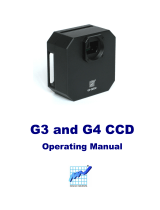Remember it is not necessary (or practical) to manually deselect the low quality frames from
your sequence. Registax has built-in features that will automatically filter out low quality
images based on individual frame quality and alignment differences. However, viewing the
frame list will allow you the ability to scroll through and select a high quality, high contrast
image to compare and align with all the other frames in the sequence (See Aligning Screen
in next section).
10. Frames-slider (control) – This allows the user to walk through the images and
select/deselect them (using the spacebar). The functionality overlaps slightly with #9.
11. Project load (button) – This allows you to restore previously saved settings and
image-information. After loading, the program will bring you back to the stage where
you left. You can load project-files and also frame lists (saved previously from the frame
list) with this function.
12. Save (button) – This function allows you to save most of the current settings of the
program and also the information needed to process your images. If you have aligned
your images, that information will be saved. If you have stacked your images it will also
know that. This function allows you to stop working on a set of images and continue
your work later without loosing all the information of alignment, etc. The files used are
simple ASCII-formatted files and are saved as *.rsp (RegiStax Projectfile)
13. Save as (button) – You can save the current settings of the program as a “logical” file
name. The program will show the date_time the avi-file was shot in the following format
(_yyyymmdd_hhmmss). You can alter this name (add a subject name in front of
date/time) and save the project. A projectfile will be created with this name and
your original avi will also be assigned this name. This makes it easier to convert
your recorded avi's into logical named ones and keep track of them.
14. Help (button) – This provides a simple help text that shows some of the default func-
tionality of the tab page that is currently active. The texts are in a set of 5 rtf files the
user can enhance themselves.
15. Cancel (button) – This button can be used at any stage to stop processing. Sometimes
this will not lead to an immediate halt of a processing run, and the use may need to
wait until the last command has been executed.
16. Load Darkframe – Pressing this opens a dialog where the user can select
a darkframe (bmp, fits) to use in processing. For certain astro-images it is usefull to use
a darkframe to remove "hot" pixels or a flatfield to reduce vignetting effects. You can
choose a BMP or a FITS file to serve as darkframe/flatfield. The program allows you to
create darkframes/flatfield directly from a sequence of images. Just load the sequence
and press the "Make Darkframe" or "Make flatfield" button. When a darkframe/flatfield
is chosen you can decide to use it by checkmarking the corresponding checkbox. Make
sure your darkframe and/or flatfield are the same size as the input images!
16





















